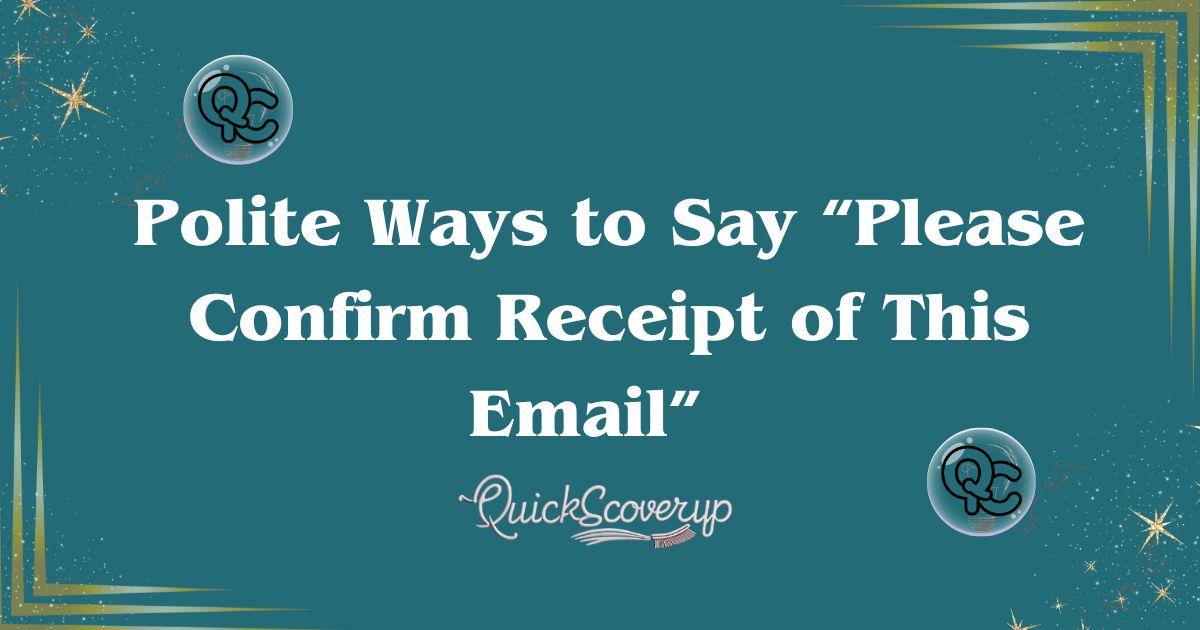“Please confirm receipt of this email” is a common phrase used in professional communication. It asks the recipient to acknowledge that they have received the message. This is particularly important when sharing critical information or when an action is required, ensuring the sender knows the email reached the recipient successfully.
Confirming receipt is important because it shows professionalism and accountability. It assures the sender that their message was not lost or overlooked. In some cases, it can even serve as proof that important information was delivered and received, avoiding any misunderstandings or delays.
From this blog, we learn the significance of clear communication and the value of acknowledging emails promptly. Confirming receipt helps build trust and ensures smooth collaboration between teams or individuals. It also shows respect for the sender’s time and effort in reaching out.
Is It Polite to Say “Please Confirm Receipt of This Email”?
Yes, it is polite to ask someone to confirm receipt of an email. This phrase is often used in professional settings to ensure that important information has been received and understood. While direct, it is not considered rude as long as the tone of the message remains courteous. Adding “please” softens the request, making it sound more polite and respectful. However, it’s important to be mindful of the situation and the recipient’s preferences.
Here is an example of how to use this phrase in an email.

Pros:
- Ensures important information is acknowledged.
- Provides a record of communication.
- Helps maintain clear professional communication.
Cons:
- Can seem overly formal in casual settings.
- May feel repetitive if used too often.
- Might appear as pressure to respond quickly.
15 Other Ways to Say “Please Confirm Receipt of This Email”
Please let me know if you’ve received this email
Could you please acknowledge receipt of this message?
Please confirm that this email has been received
I’d appreciate a quick confirmation that this email has reached you
Please send a brief reply to confirm receipt
“Let me know if this email has come through on your end.”
“A confirmation of receipt would be greatly appreciated.”
“Please confirm receipt of this message at your earliest convenience.”
“Just a quick note to confirm that this message has arrived safely.”
“I’d be grateful if you could confirm receipt of this email.”
“When you receive this, please drop me a quick confirmation.”
1. Please let me know that you’ve received this email
Using “Please let me know that you’ve received this email” adds a personal touch to your communication. It’s a polite way of requesting confirmation without sounding too formal. This phrase invites engagement and subtly encourages a response. It ensures that your message is acknowledged, fostering smoother interactions, especially in busy environments where emails can easily be overlooked.
Example:
2. Could you please acknowledge receipt of this message?
When someone asks, “Could you please acknowledge receipt of this message?” they’re subtly reminding you to confirm you’ve seen their email. It signals the importance of the content, urging a quick response. Such a request isn’t just polite it can serve as a timestamp for responsibility and action. Failing to acknowledge can lead to missed deadlines or misunderstandings. It is a common business etiquette tool that fosters clear communication and accountability.
Example:
Dear jordan,
I hope this message finds you well. Could you kindly acknowledge receipt of this email at your earliest convenience? This will ensure we are aligned and ready to proceed with the next steps.
Best regards,
Marry
3. Please confirm that this email has been received
When confirming an email, it’s important to craft a message that is polite yet clear to ensure the recipient acknowledges the receipt promptly. A well-phrased request stands out from the usual routine emails. Try infusing a bit of warmth or urgency, depending on the situation, to create a sense of importance. Using action-driven words and avoiding passive tones will make your message stronger. Always be specific about what you’re confirming, so the recipient knows exactly what to check.
Example:
4. I’d appreciate a quick confirmation that this email has reached you
When crafting a message like “I’d appreciate a quick confirmation that this email has reached you,” you should aim for brevity while ensuring clarity and politeness. This phrase works well in professional contexts where follow-up is needed. The key is to show respect for the recipient’s time and subtly encourage a reply. It’s also effective to add a sense of urgency or importance without sounding demanding, prompting the reader to acknowledge your email quickly.
Example:
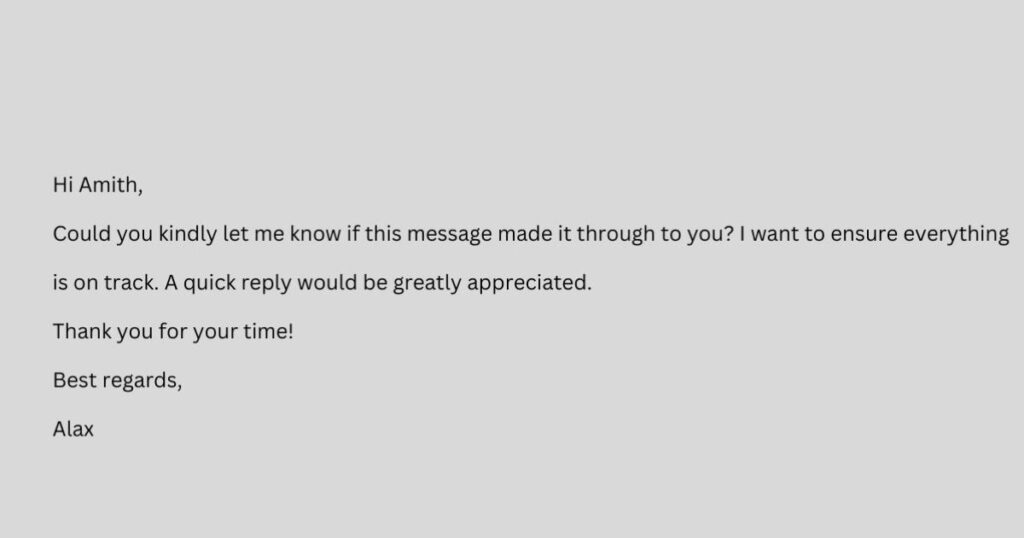
5. Please send a brief reply to confirm receipt
To craft a memorable reply request, clarity, urgency, and personalization are key. Instead of using generic phrasing, add a human touch by reflecting the sender’s intent, subtly prompting action. Make the reader feel valued by showing that their response is crucial to moving forward. Avoid formal, robotic language and aim for a friendly tone that encourages engagement. This approach ensures a better chance of getting a quick confirmation.
Example:
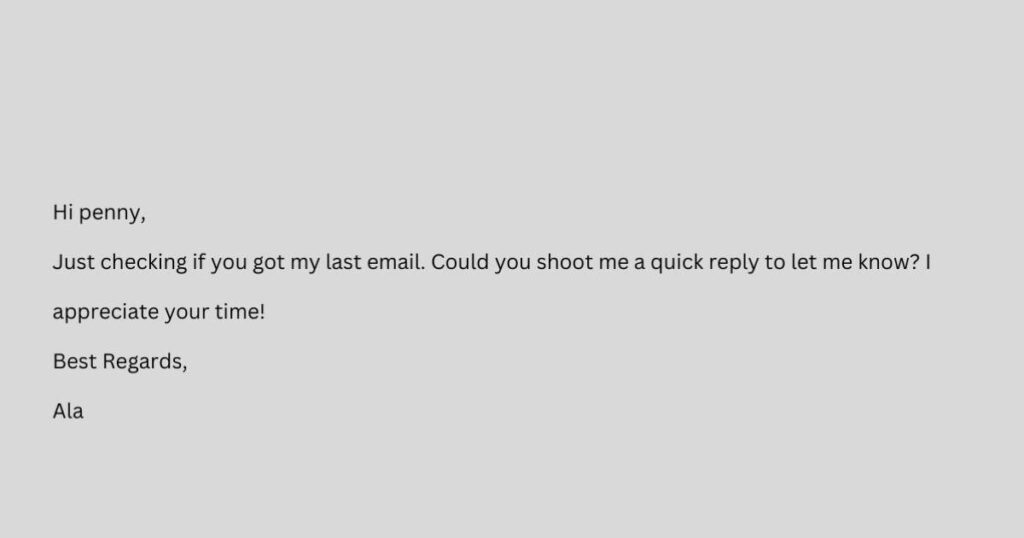
6. Just following up to see if you have received my previous email
When you send a follow-up email, it’s essential to stand out and avoid sounding repetitive. Instead of the typical “just following up” line, try engaging your recipient with a different approach, emphasizing urgency, or offering new insights. This can trigger a more immediate response. Rephrase your follow-up to sound more conversational and ensure the recipient feels valued, rather than pressured. Include a brief reminder of the context and present it in a way that suggests you’re keeping their time in mind.
Example:
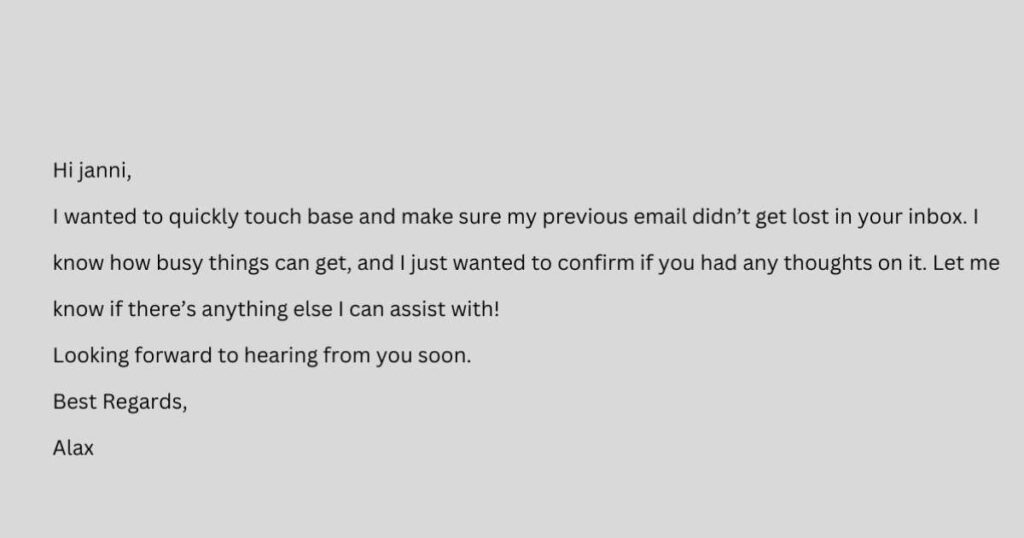
7. Following up on my previous email. Did you receive it?
When you’re following up on an email, it’s crucial to strike the right balance between polite persistence and a sense of urgency. The message should grab attention immediately, gently reminding the recipient of your previous communication without sounding demanding. It’s helpful to add a clear, actionable step to avoid any further delays. Make the subject line intriguing and to the point, ensuring it stands out in their inbox. Additionally, you can reference a potential benefit or a deadline, which can create a subtle nudge.
Example:
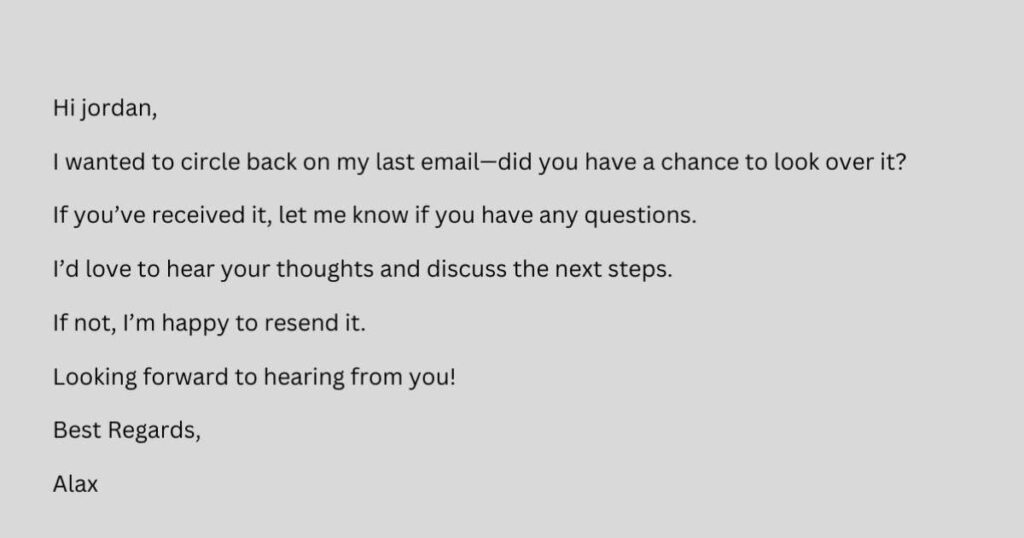
8. Just checking in – did you receive my email?
In today’s fast-paced world, inboxes flood with messages, and sometimes emails get lost in the shuffle. A quick follow-up can make all the difference in ensuring your communication is seen and acted upon. Crafting a friendly reminder can not only prompt a response but also demonstrate your keen interest and professionalism. A touch of personal flair in your follow-up can turn a mundane task into a memorable interaction.
Example:
9. Just wanted to check if you saw my email
In semi-formal communications, the phrase “Just wanted to check if you saw my email” strikes a balance between politeness and professionalism. It conveys a considerate tone, ensuring you don’t come across as overly demanding. This approach is particularly effective when you’re seeking a response while respecting the recipient’s time and workload. Using this phrasing demonstrates your understanding of the recipient’s potential busyness while gently prompting them to review your previous message.
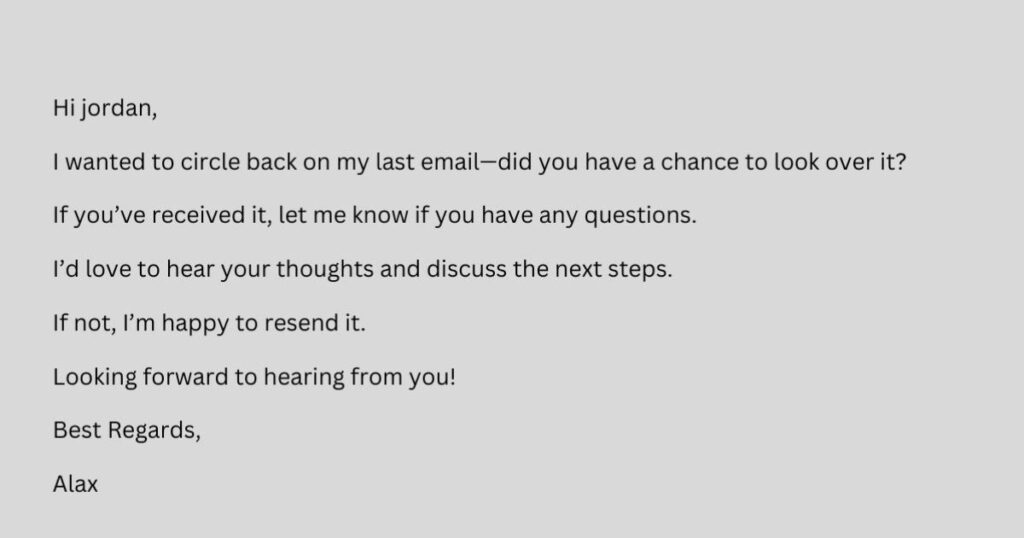
10. Checking in to see if my previous email landed in your inbox
In semi-formal communication, it’s crucial to strike the right balance between professionalism and friendliness. A phrase like “Checking in to see if my previous email landed in your inbox” maintains a courteous tone, without being too casual or overly formal. It shows you’re proactive and considerate of the recipient’s time. Here’s an example of how you might use it:
Example:
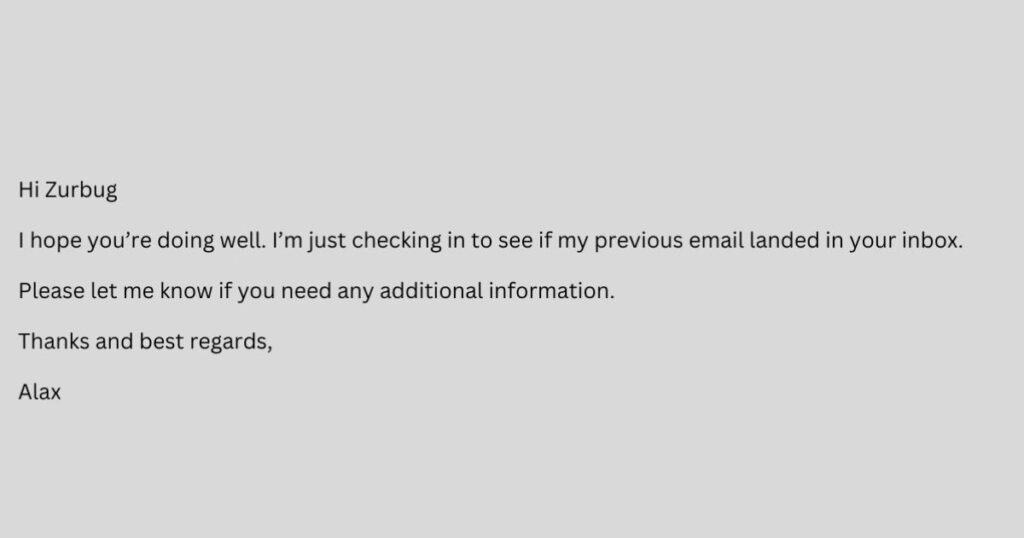
11. A confirmation of receipt would be greatly appreciated
Using “A confirmation of receipt would be greatly appreciated” in semi-formal emails strikes a polite and respectful tone. This phrase is perfect when you need to ensure your message has been received without sounding too demanding. It conveys courtesy and professionalism, keeping the communication smooth and respectful. It also shows you value the recipient’s time and confirmation. This approach maintains a balance between formality and friendliness.
Example:
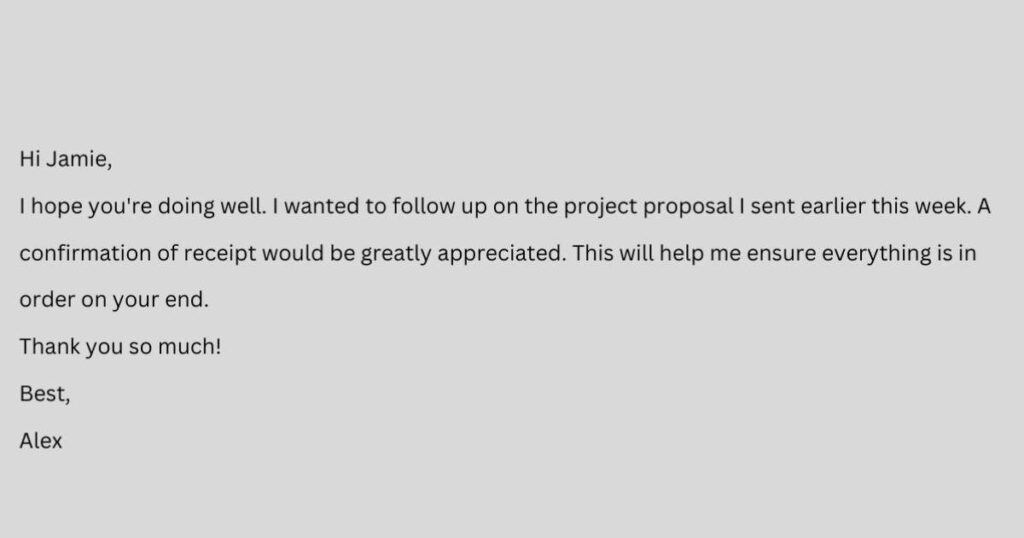
12. Please confirm receipt of this message at your earliest convenience
The phrase “Please confirm receipt of this message at your earliest convenience” strikes a balance between formality and urgency. It’s polite, yet prompts a swift response. Using such a phrase shows respect for the recipient’s time while still emphasizing the importance of the confirmation. In a semi-formal email, this tone helps maintain professionalism without being too demanding.
Example:
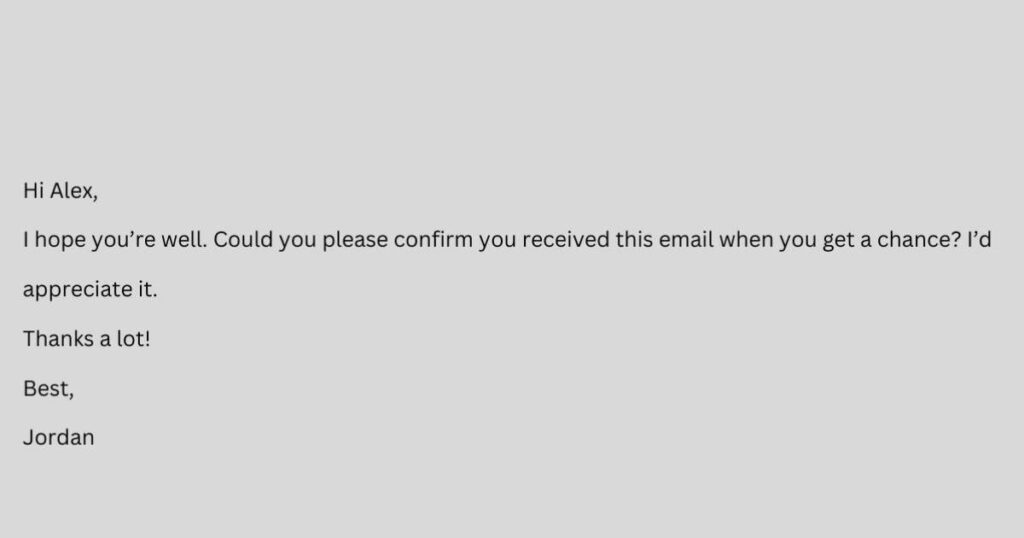
13. Just a quick note to confirm that this message has arrived safely
When confirming receipt of a message, it’s crucial to be both clear and courteous. A professional approach ensures the recipient feels acknowledged and valued. Phrases like “Just a quick note to confirm that this message has arrived safely” balance formality with approachability. This tone reassures the sender that their message has been properly received, while also setting the stage for a timely response.
Example:
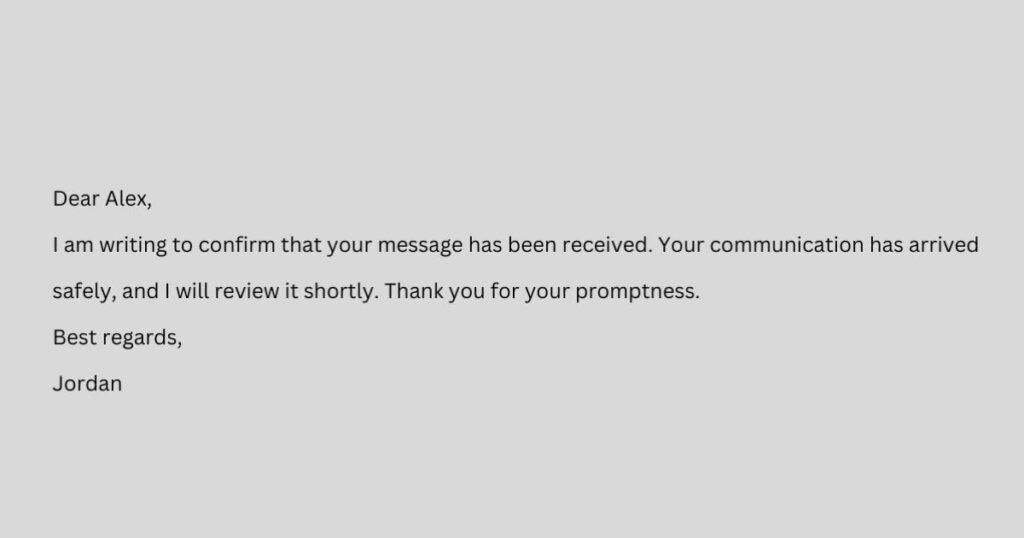
14. I’d be grateful if you could confirm receipt of this email
When you ask, “I’d be grateful if you could confirm receipt of this email,” you’re using a polite and respectful tone. This phrase shows you value the recipient’s acknowledgment. It’s direct but not demanding. You’re essentially making a small request without putting too much pressure. It’s a balanced way to ensure your email was received.
Example:
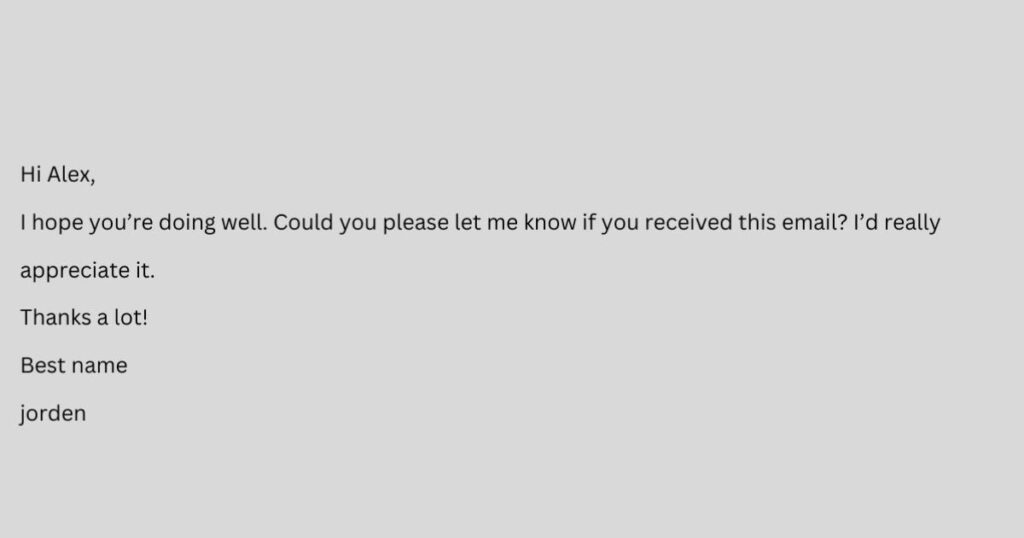
15. When you receive this, please drop me a quick confirmation
When you ask for confirmation, it’s best to keep it friendly and straightforward. A simple, direct request works well. Avoid sounding too formal or demanding. Your goal is to make it easy for the recipient to respond. Here’s how you might phrase it:
Example:
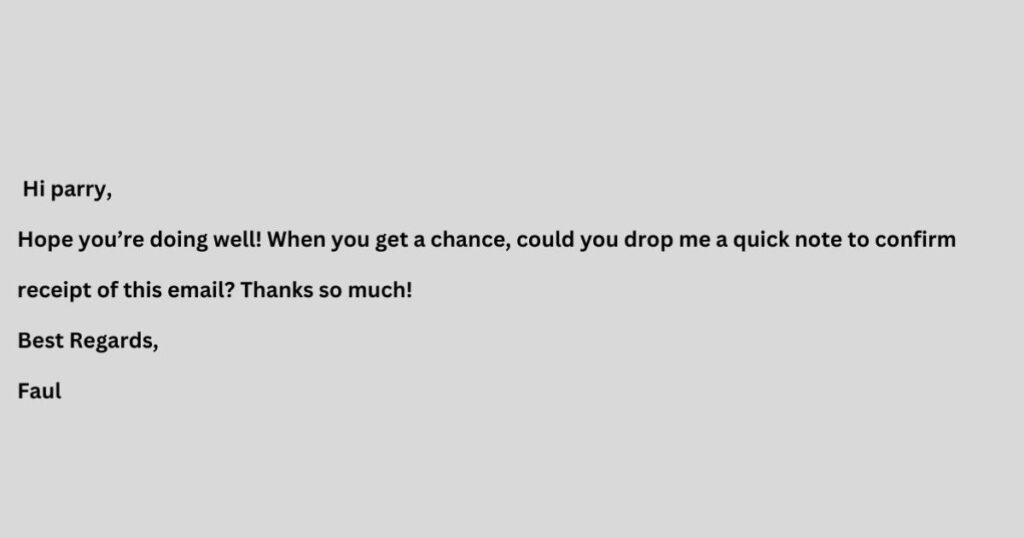
Final Thoughts
In conclusion, crafting a polite request for email confirmation is all about balancing respect and clarity. Choose words that convey courtesy without demanding too much. Phrases like “Could you kindly acknowledge receipt?” or “When you get a chance, please let me know” maintain a friendly tone. This approach ensures your request is received well and encourages a prompt response. Being considerate in your wording can make your communication more effective and pleasant.
FAQ’s
What are some polite alternatives to “Please confirm receipt of this email”?
Try “Could you let me know when you receive this email?” or “I’d appreciate a quick reply to confirm receipt.”
How can I ask for confirmation without sounding demanding?
Use “Whenever you get a chance, could you confirm receipt?” or “When it’s convenient, please let me know you’ve received this.”
What is a casual way to request email confirmation?
You could say, “Just give me a heads-up when you get this!” or “A quick reply to confirm would be great!”
How can I ask for confirmation in a professional email?
Try “Please acknowledge receipt of this message at your earliest convenience.” or “Kindly confirm receipt of this email when you have a moment.”
What’s a friendly way to request confirmation?
Use “Could you drop me a quick note to let me know you got this?” or “When you get a chance, please let me know if this arrived safely.”
Also Read
20 Other Ways to Say “Happy Sabbath” (With Examples)
15 Ways to Say “Happy Birthday in Advance”
25 Other Ways to Say “Thank You for Clarifying”
